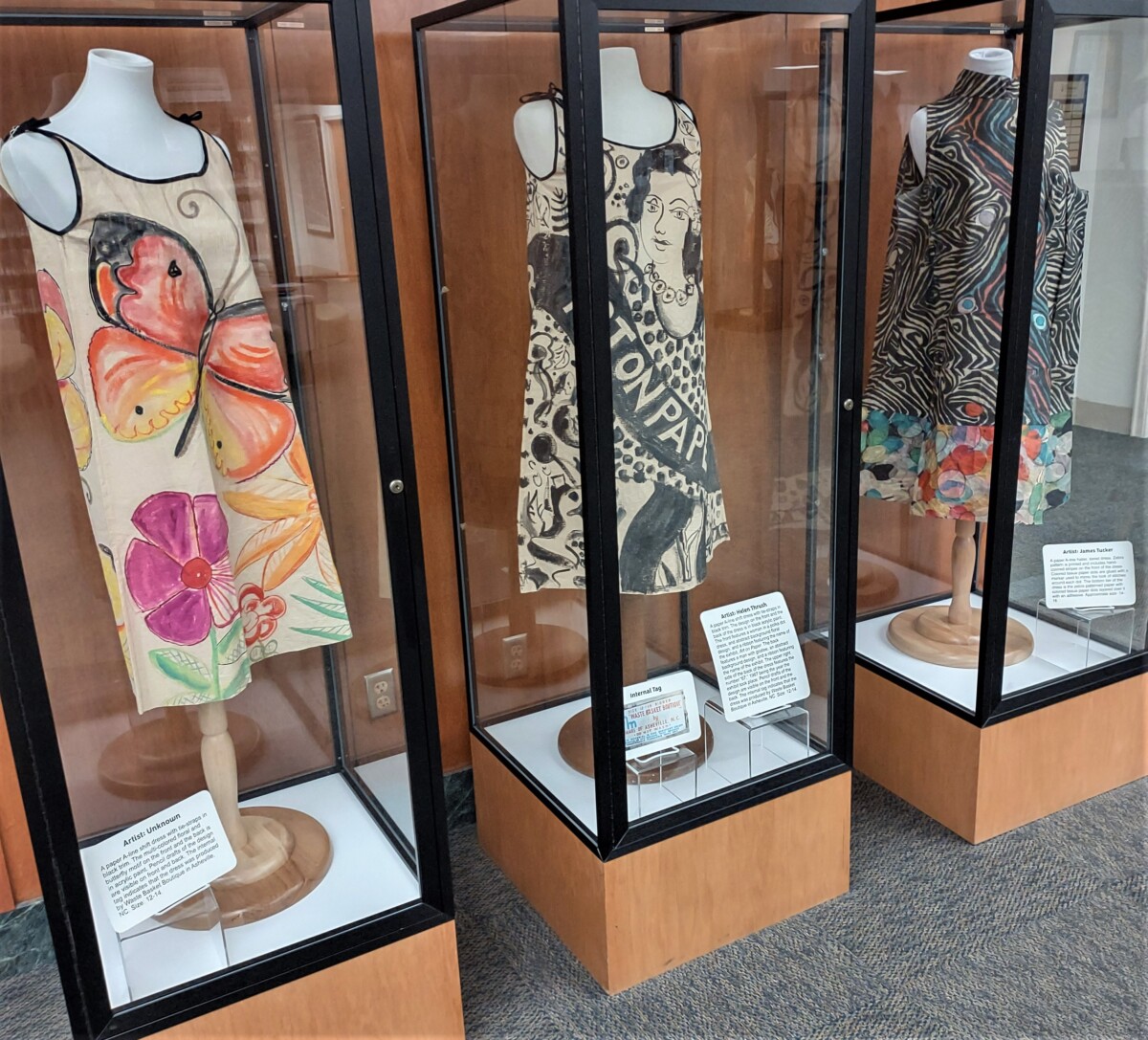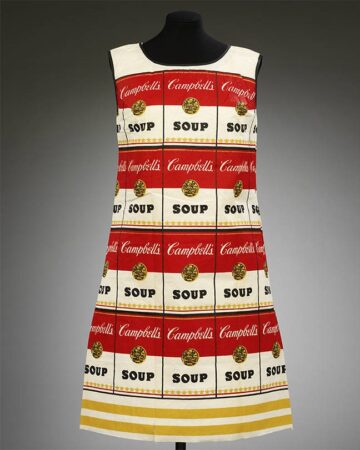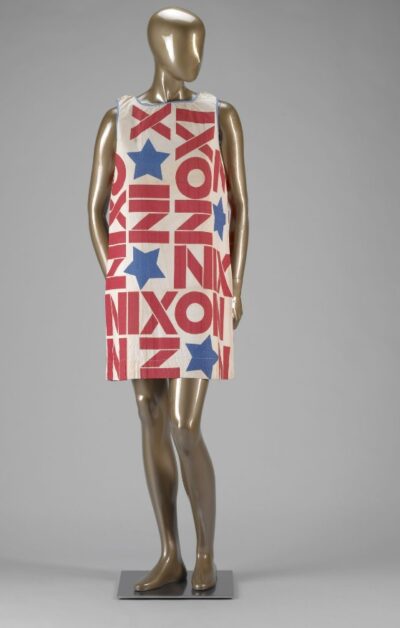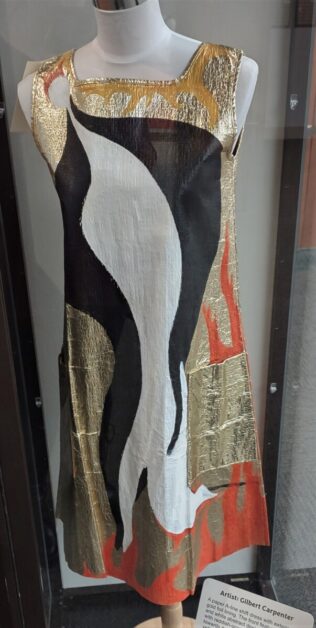By Shelbi Webb, Diversity Resident Librarian
How did a simple ad set a trend for disposable dresses? See 1960’s consumerism bleed into a fad that transformed fashion?

For starters, the dress came about in 1965 as a challenge presented to a wife of a Scott Paper employee to create a dress made of the company’s latest product, Dura-Weave. This cellulose fabric used for hospital personnel’s laundry-reduced garments served as the new material for Scott’s promotional campaign: Send Scott $1 and one would receive a throwaway dress along with the throwaway tableware Scott promoted and coupons for other Scott products. Such a disposable nature allowed the masses to keep up with the fast-changing styles of the times. People used scissors and tape to adjust looks and stay trendy – much less hassle than needles and thread.

The fad touched other parts of society: capitalism and art fused together in 1967 with the creation of the “Souper Dress,” Warhol’s Campbell’s soup masterpiece but now printed on a dress for Campbells to sell and advertise. Other companies took advantage of the paper dress’ easy print quality as well. This promotional dress also became a promo in the political sphere as Nixon’s campaign ad in 1968.
The paper dress fad made an appearance on UNC Greensboro’s campus as an exhibit known as the Art on Paper, 1967 show at Weatherspoon Museum. Dillard Paper company’s sponsorship allowed the Weatherspoon Guild to pursue this artistic venture. Featuring fast fashion served as a way to show audiences the state of Art in that time period. The dresses’ painted designs reflected the personalities of the 18 docents who wore the garments.

One or two wears then toss made the dress appealing, but eventually manufacturers began combining wood pulp with synthetic fibers, like nylon, to make the dresses last longer. Consumers could get a couple washes out of the dress and even iron it at a cool setting. However, advancements in clothing technology led to cheap fabric that could keep up with daily trends while more wearable than Dura-Weave-like materials. Paper dresses couldn’t compete. Counterculture’s rejection of materialism conflicted with paper dresses’ mass produce-then-throwaway nature as well. By 1968, the fad was thrown out completely.
Paper dresses remain notable mentions in our fashion, consumer, and art world. Isabelle de Borchgrave, the Belgian artist known for designing paper dresses, created a paper gown worn by the Queen of Belgium in 2004. She continued to use paper gowns as a mode of art to tell fashion’s history from gowns worn by the Medicis to mantua dresses of the 18th century. In a 2019 interview with Vogue, Borchgrave remarked about her journey with paper dressmaking: “I was, and still am, surprised every day by what paper can give you. Paper gives you freedom…”
The five dresses in the Fast Fashion of the 1960s, Paper Dresses exhibit were all designed by faculty in the UNC Greensboro Department of Art for the 1967 Art on Paper gala held at the Weatherspoon Art Museum and are held in the Martha Blakeney Hodges Special Collections & University Archives. This exhibit is available for viewing on the first floor of the W.C. Jackson library from January 4th until June 1st, 2023.

One thought on “New Exhibit: Fast Fashion of the 1960s, Paper Dresses”